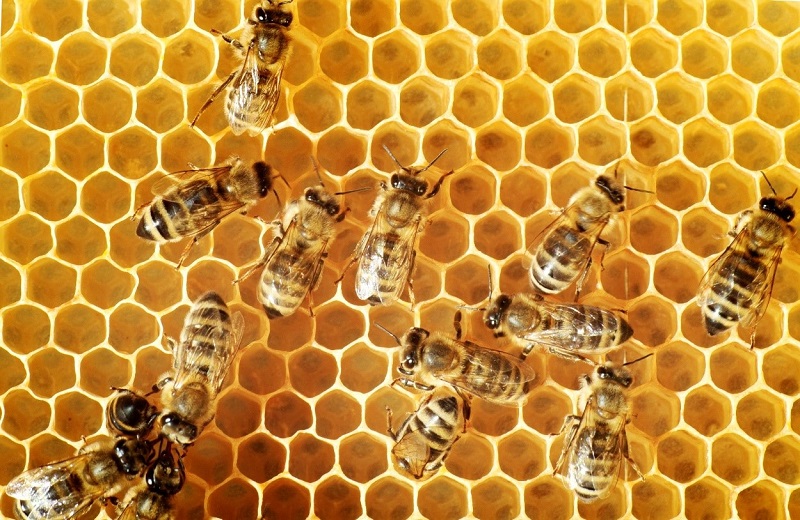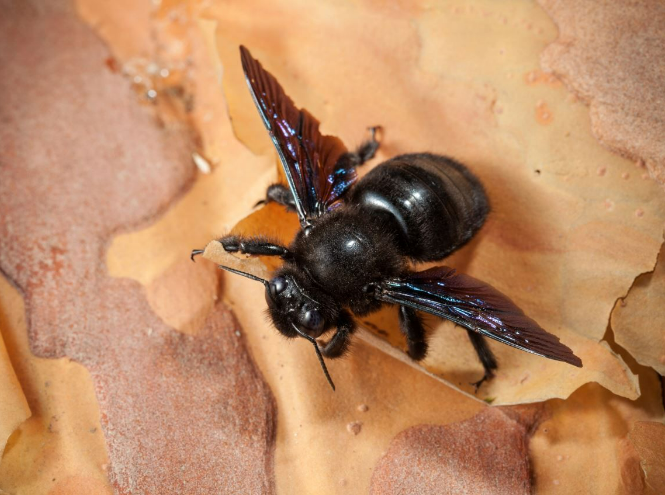Top 4 Bee ‘Facts’ That Are Myths

Learn Interesting Bee Facts While Debunking the Myths
Summer is approaching quickly, and with the warmer temperatures and increased sunshine comes the return of bees.
Most people think bees are nothing but a nuisance that also happen to provide us with delicious honey.
Despite the benefits of bees in nature, beehives in or around your home or business can be dangerous and even potentially destructive.
If you or someone in your family has an allergy to the pest, beehive removal and control is essential.
There are a lot of myths about bees requiring us to explain the interesting facts about bees that are true.
Top Debunked Bee Facts
1. All Bees Sting
False.
From a young age we are taught to believe that all bees can sting and can even sting people repeatedly.
The reality is, only female bees can sting. And bees typically won’t sting someone unless they feel provoked or threatened.
Honey bees, for example, typically cannot sting humans more than once, as it is likely that their stingers will get stuck in the skin. This is due to the fact that their stingers have an edge that is similar to barbed wire.
While we’re on the subject of bees stinging, it’s worth noting that bees don’t sting other insects — typically.
“The stinging pest that can sting other insects repeatedly are wasps not bees. This is because they have a smooth stinger on the edges,” lead Catseye Pest Control technician Paul Dube, A.C.E. explained. “Bees typically don’t need to sting other insects”
2. You Should Remove Stingers with Tweezers
False.
After being stung by a bee, the first thing you should do is check for a stinger.
If you find a stinger in your skin, do not use tweezers to remove it.
To remove a bee stinger from your skin, scrape the area using something with a dulled edge such as a fingernail or the edge of a credit card.
Using an item with a dulled edge will prevent more venom from being released into your body. Attempting to use tweezers or your fingers to remove a bee stinger can release more venom into the wound.
There are different steps to take when removing bee stings in dogs and cats.
3. Jumping in the Water Avoids Bee Stings
False.
A very common place to encounter bees in the summer season is by the pool or at the beach.
Many people think that the best way to avoid a bee sting is to jump into the water and wait the bee out.
However, bees can fly above the surface of the water and wait until something grabs their attention. So, in all likeliness, the bee could still be waiting for you when you come up for air.
The best way to avoid a bee sting is to simply seek shelter in an area that the bee cannot access.
If you can, also cover your head and face with a towel.
Do not swat at bee(s), this only aggravates the pest and increases the chance of being stung.
4. Eating Honey Can Reduce Bee Allergies
False.
In recent years, the idea that eating locally made, unprocessed honey will make you less sensitive to bees has become popular.
While it’s true that eating small portions of something you’re allergic to could decrease your sensitivity to it overtime — it is not the solution people hope for.
Many of us assume that the pollen in honey is the same pollen bees interact with daily and that eating it could reduce allergies associated with bees and pollen.
Since the pollen bees interact with is from flowers and not weeds, trees, or grass, eating honey is not the ideal way to alleviate allergies.

If you’ve noticed an increase in bee activity near your home or commercial business, it’s possible that you are dealing with a bee infestation.
While dealing with a bee situation, keep in mind that bees will likely sting if they are feeling provoked or if the hive and/or queen is in danger.
Catseye Pest Control has the knowledge and equipment to successfully handle bee control and a nest removal.
Our process ensures a swift and efficient removal while also taking preventative steps to stop a larger problem from occurring.
To learn more about Catseye’s bee removal process and how we can help eliminate a bee infestation, contact our bee removal and control professionals today.






